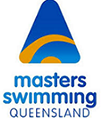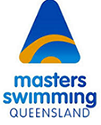Multi Class Swimmers
Multi Class swimming provides meaningful competition for swimmers with disability. Disabilities may vary from swimmer to swimmer and to determine the impact of the impairment on a swimmer’s ability to compete in swimming, the swimmer is required to be classified.
Some swimmers may already have a classification card, which simply means that they submit their classification when they register for a swim meet.
There are two steps to being classified.
1. A provisional classification can be made while you wait for the classification to be made face to face.
2. Apply for the face to face classification through MSQ, which in turn works with SQ to have a swimmer classified. These may only occur 2 – 3 times per year, in which case the provisional classification may be a preferred first step option.
CLASSIFICATION
What is Classification?
Classification groups athletes according to the impact of their impairment on their ability to compete in the sport of swimming. The purpose of classification in swimming is to minimise the impact of eligible impairment types on the outcome of competition so that athletes who succeed in competition are those with best anthropometry, physiology and psychology and who have enhanced them to best effect.
What are the different classes?
There are 19 classes in the swimming classification system which caters for a range of disabilities. Each class has minimum eligibility requirements and swimmers must undergo specific Athlete Evaluation or Eligibility process to obtain a classification. Swimmers receive a class for each stroke discipline, and a prefix indicates which stroke the class applies to; S – Freestyle, Backstroke and Butterfly, SB – Breaststroke, SM – Individual Medley.
S1-10 Swimmers with physical impairment
Swimmers are assessed through physical and technical testing in competition observation. Muscle strength, movement coordination, joint range of movement and limb/trunk length contribute to the allocation of classes. Classes range from swimmers with most significant physical impairment (Class 1) to those with minimal impairment (class 10).
S11-13 Swimmers with vision impairment
Ranges from class 11 for swimmers who are blind to class 13 for swimmers who are legally blind (i.e. acuity less than or equal to 6/60 or visual field less than 20 degrees). Class 11 will need to wear blackened googles and authorised by the technical referee of the competition.
S14 Swimmers with intellectual impairment
Swimmers with an IQ score of 75 or less; with significant limitations in adaptive behaviour expressed in conceptual, social, and practical adaptive skills; acquired prior to 18 years of age.
S15 Swimmers with hearing impairment
Swimmers who have a recognised hearing impairment according to the following ICSD standards; deaf, defined as a hearing loss of at least 55dB in the better ear 3FAHL
S16 Swimmers who have received a transplant
Any person having undergone invasive treatment of a non-cosmetic nature requiring organs and/or tissues (excluding blood) donated by another person.
S17 Transition classification
S18 Intellectual impairment with a significant other impairment (e.g. Down Syndrome)
S19 Intellectual impairment: Autism
Step 1 classification phone call or email:
Link: Swimming Queensland website
Phone contact: Swimming Queensland: 07 3390 2011

